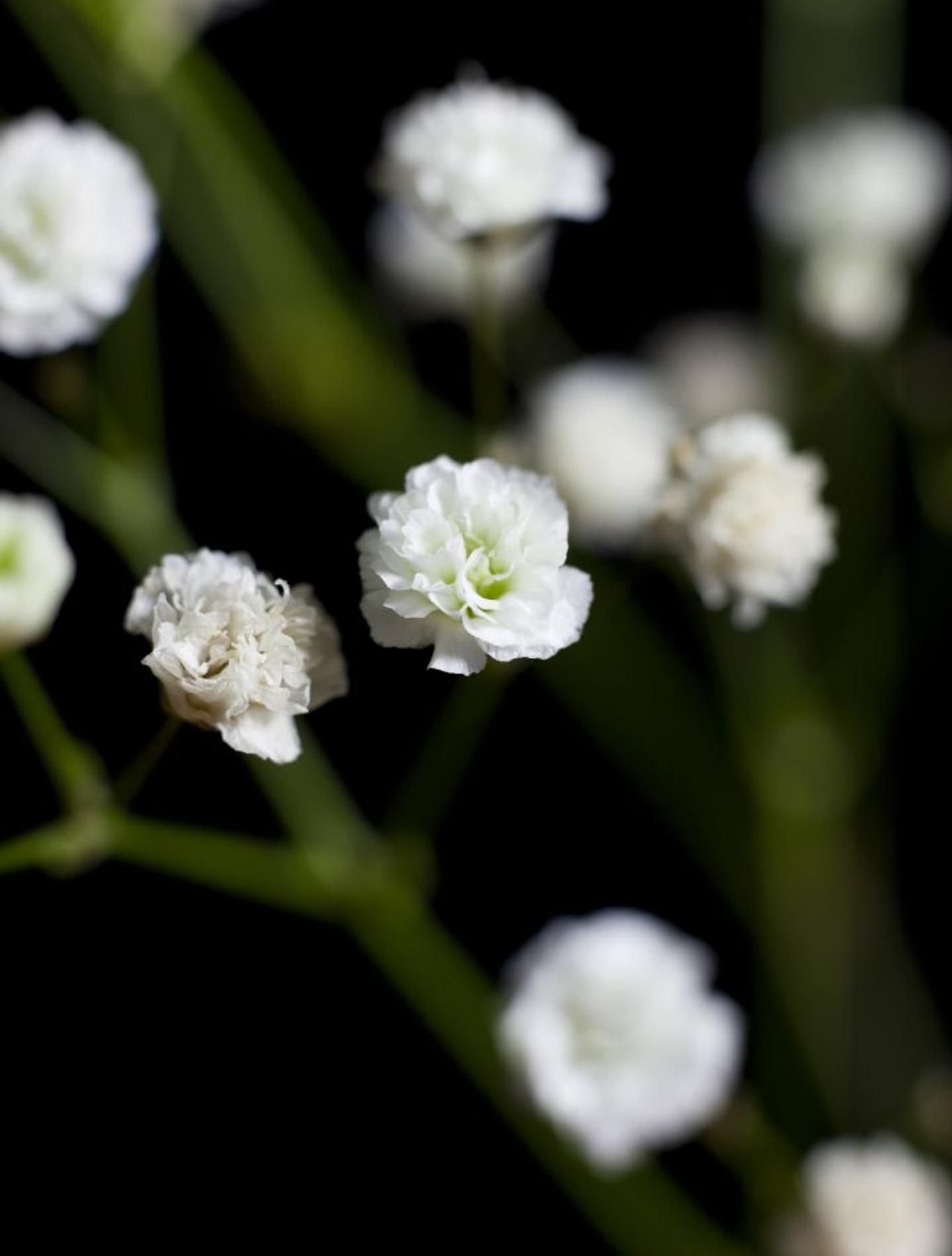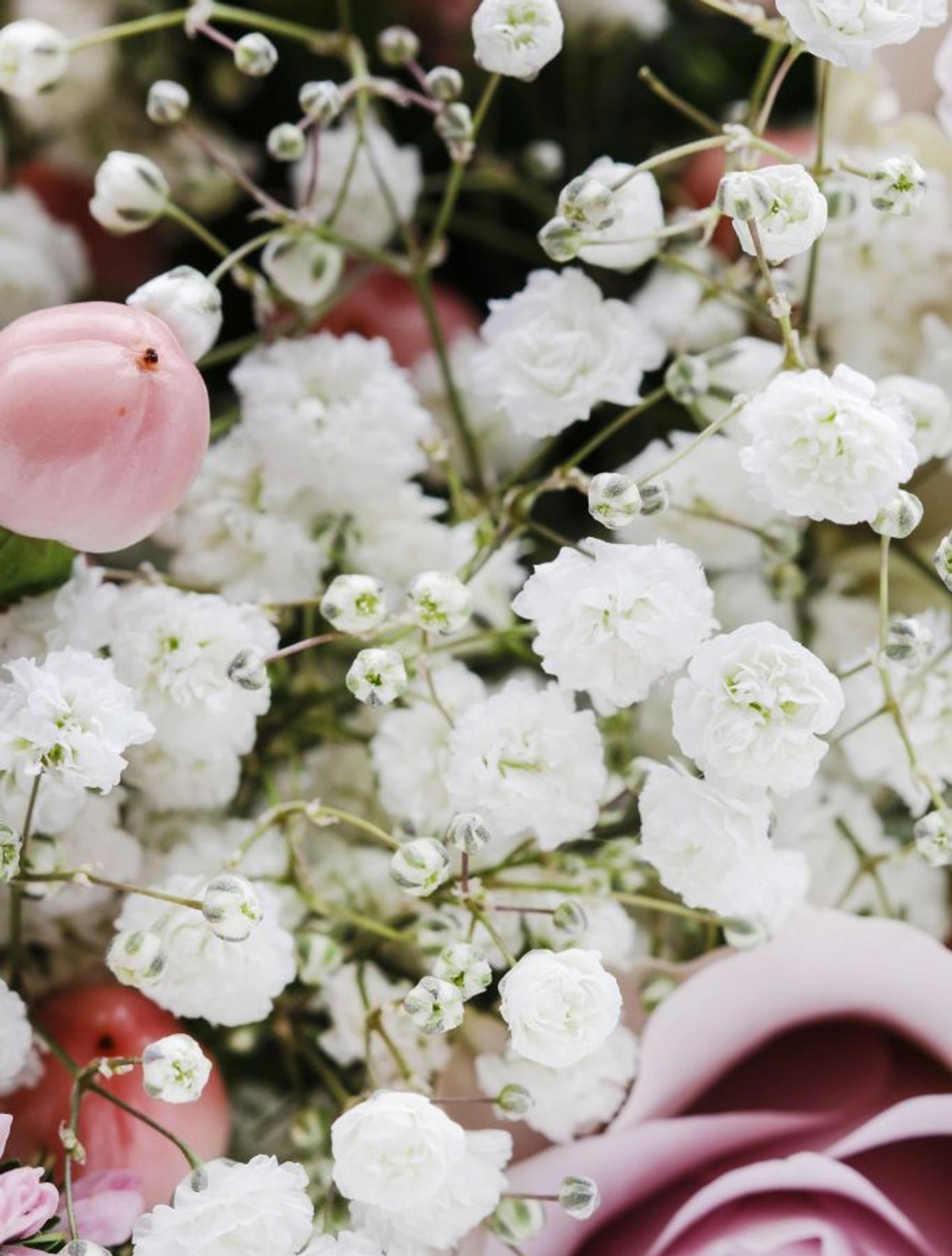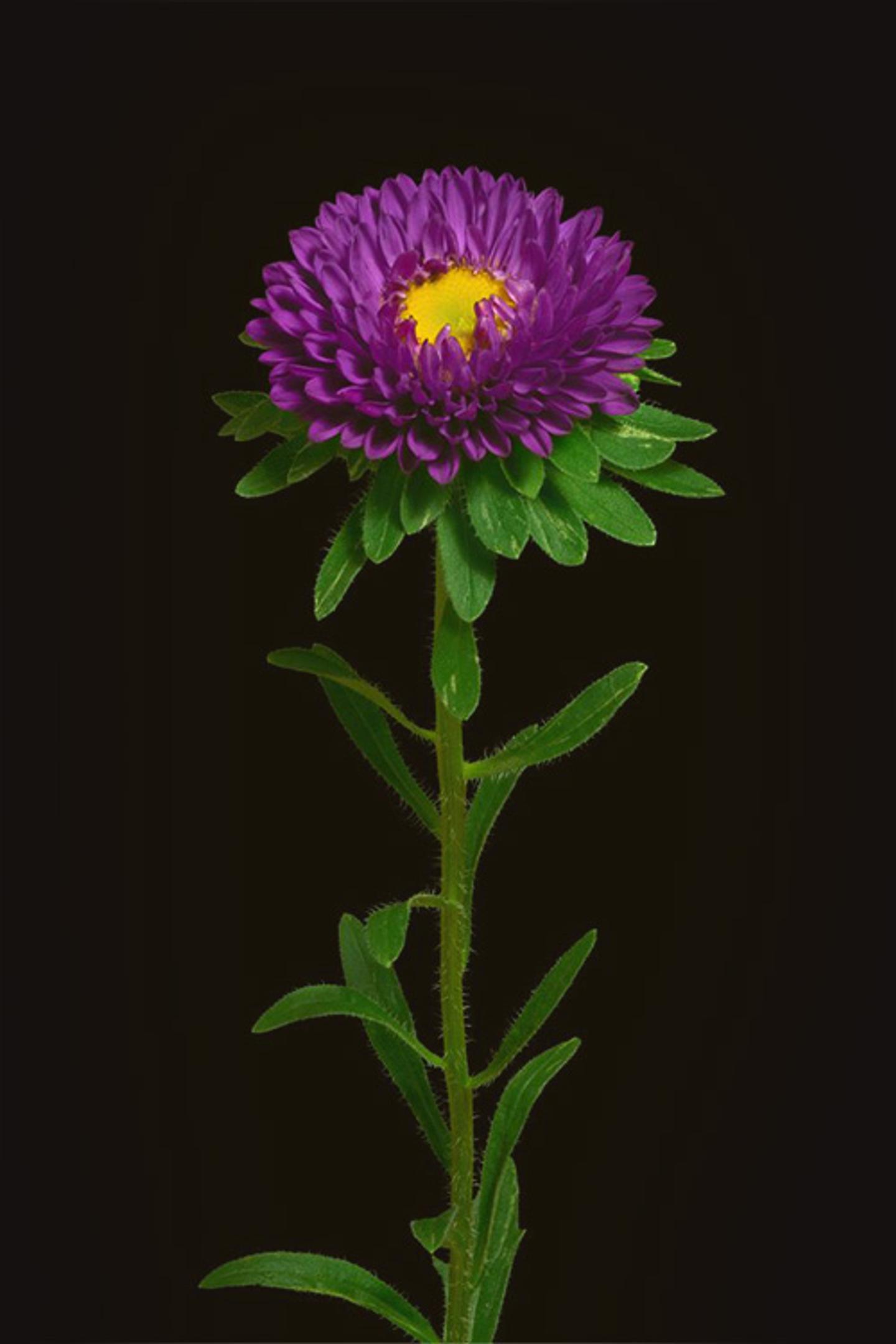Flower Meanings
Baby’s Breath


The Meaning of Baby's Breath
What’s that small, white, puffy flower in the bouquet? Odds are it’s baby’s breath.
Even those completely unfamiliar with flowers know what baby’s breath looks like. It’s been an essential part of floral arrangements for as far back as we can remember, and there doesn’t seem to be any sign of it stopping.
Nearly everyone on the planet has seen baby’s breath peeking out of a corsage or bouquet, but not many know the deeper meaning behind it.
Etymological Meaning of the Baby Breath Flower
The name Gypsophila is derived from the fact that all the flowers in this family thrive on soil high in gypsum, a mineral that makes the soil too thick and heavy for many other types of plants. [1]
These small, bright white flowers symbolize:
- Innocence
- Newborn babies
- Reconnecting with lost loves or disconnected family members
- Self-discipline and the ability to stay focused on love
- Everlasting and undying love, including family, platonic, and romantic bonds
- Pureness and freedom from outside influences or corruption
- The power of the Holy Spirit in Christian faith
And that’s just to name a few! There is a lot more to tell about the symbolic meanings behind this famous bloom.
Newborn babies
Who would’ve guessed it? Baby’s breath is a symbol of newborn babies and usually gifted to them and their parents. Symbolic of innocence and purity, this little flower represents everything nice, kind, and loving.
Holy Spirit
Baby’s breath is also a symbol of the Holy Spirit. This bloom is often used in Christian ceremonies, and we can often see it as a part of flower arrangements.
Self-discipline
Baby’s breath symbolizes self-discipline and it is linked to people’s ability to devote their lives to something more substantial and more powerful than themselves. This symbolic meaning is often tied to prayer and a human being’s ability to be in touch with the higher forces.
Spirituality
The white baby’s breath flower is a symbol of unity, innocence, and spirituality, which goes perfectly with the symbolic meaning of this flower in general. White flowers are a must for every wedding ceremony and every baby shower.
Baby's Breath Color Meanings
While not as common, baby’s breath also comes in a few other various colors outside of its normal white hue.
- Blue baby’s breath symbolizes honesty, trust, and respect.
- Orange baby’s breath symbolizes happiness, joy, and optimism.
- Red baby’s breath symbolizes love, affection, and romance.
- Pink baby’s breath is a symbol of gentle emotions, love, and romance.
- Purple baby’s breath is a symbol of nobility, royalty, and beauty.
- Yellow baby’s breath is a symbol of happiness, joy, and friendships.
What Does Baby's Breath Smell Like?
Baby’s Breath smells just like you would imagine—like spit-up. [9]

"And she wondered if that was what Heaven looked like, dreams swirling around you like baby’s breath and kissing you with soft pale cupid’s lips."
Carly Dugmore
The History of Baby's Breath
According to harvesting-history.com [2], gypsophila, which is known in the United States as Baby’s Breath and in Great Britain as Soapwort, is a vigorous perennial which was originally native to Europe, Asia, and Northern Africa. The plant was introduced into the United States in 1828 when many plants admired by the Victorian gardeners of Great Britain made their way into the gardens of the United States. Gardeners and garden writers immediately fell in love with the plant. It was described as a plant of great daintiness, both in foliage and flowers, and useful for mist-like effects in mixed borders and containers.
Baby’s breath was a staple of the Victorian Cottage Garden because of its light lacy floral canopy and its value as a long-lasting cut flower. Still, it was most revered because it symbolizes everlasting love, purity, and innocence in the Victorian language of flowers.
The name refers to the fact that the plant loves calcium-rich soils and is often found growing wild in the areas where there are gypsum deposits. They grow in sandy, dry soil. It is interesting to know that the work gypsophila actually means chalk-loving, and this name comes from the conditions preferred by the baby’s breath plant. Johann Amman, a Swiss-Russian botanist, sent the first samples of the plant from St Petersburg. The samples then traveled all the way to Linnaeus.
Baby’s breath attracts many varieties of butterflies and also is known to attract bees. The variety, Covent Garden, was introduced in 1936 by the Grand Junction Seed Company of Colorado.
Baby’s breath quickly became popular and cultivated in countries like Peru. In fact, a large amount of Peru’s flower exports are thanks to baby’s breath alone!
In cities like Chicago, this plant is considered and even classified as an invasive species. Clearly, the conditions in these areas are just perfect for the plant to grow, and not much can be done to stop it. Many probably wonder why this would even pose a problem since these flowers are so very useful and popular. [3]
Although no mention has been seen for this species, at least one member of this genus has a root that is rich in saponins. Although toxic, these substances are poorly absorbed by the body and tend to pass through without causing harm. They are also broken down by heat, so long, slow baking can destroy them. Saponins are found in many plants, including several that are often used for food, such as certain beans. It is advisable not to eat large quantities of food that contain saponins. Saponins are much more toxic to some creatures, such as fish, and hunting tribes have traditionally put large quantities of them in streams, lakes, etc. to stupefy or kill the fish.
DID YOU KNOW - Baby's Breath Fun Fact
Some baby’s breath species have edible roots, and the plants and roots are also grown for and used as a medical ingredient. [4]

How to Grow Baby's Breath
Growing baby’s breath in a full sun area is relatively simple if the soil pH is right. The baby’s breath plant likes an alkaline or sweet soil. Soil should also be well-draining. If your baby’s breath plant does not perform well, take a soil test to determine its alkalinity. Start baby’s breath flowers in the garden from seeds, cuttings, or tissue cultured plants. [6]
Despite its soft, sweet name and wedding-bouquet reputation, baby’s breath (Gypsophila paniculata) has a dark double life as an invasive weed. The tiny white blossoms commonly used as filler in flower displays, grow on perennial plants that can grow up to 3 feet tall and wide.
Department of Agriculture plant hardiness zones 4 through 9, baby’s breath has escaped cultivation and naturalized across much of the northern United States and Canada. If you decide to grow baby’s breath, consider the annual plant (Gypsophila muralis), which is not invasive. [6]
Locate your baby’s breath plant in full sun for the fastest growth. The plant also grows in partial sun. Select an appropriate location the first time around because baby’s breath does not like to be transplanted.
Plant baby’s breath in any well-drained soil that is alkaline, with a pH range from 7.0 to 7.5. In the wild, the plant grows well almost anywhere: on sandy, grassy or loamy soils in disturbed areas, beside roads, and even in ditches and cemeteries. As long as the soil drains well, your baby’s breath should do well.
Space the plants a yard apart — each should grow some 3 feet wide. If you plant in a windy area, stake the plants when they are young. As a baby’s breath plant matures, it becomes stiffer, and staking without breaking becomes more difficult.
Water weekly after planting for the first few months. Irrigate infrequently, if at all, after the plant has become established in your garden. Baby’s breath prefers dry soils and tolerates drought.
Avoid fertilizer. Baby’s breath thrives on dry, infertile soil and generally does not suffer from pest attacks or disease.
How to Dry Your Own Baby’s Breath
Reaching 12 to 18 inches (30.5-46 cm.) at maturity, you can harvest and learn how to dry your own baby’s breath flowers. When cutting to dry flowers of the baby’s breath plant, choose stems with just half of the flowers in bloom while others are only buds. Don’t use stems with browning flowers. Re-cut stems of the baby’s breath under warm running water. Bundle five to seven stems together with twine or a rubber band. Hang them upside down in a dark, warm, and well-ventilated room. Check the drying flowers after five days. When flowers are papery to the touch, they are ready for use in a dried arrangement. If they do not have the papery feel after five days, allow more time, checking every couple of days. Now that you’ve learned how to grow and dry baby’s breath, include it as a garden border! If it does well, check with local florists to see if they are interested in purchasing some of the flowers you’ve perfected in your garden.
DID YOU KNOW - Baby's Breath Fun Fact
In areas such as Chicago, this plant is considered and even classified as an invasive species.

How to Care for Baby's Breath
While it isn’t very common to receive a bouquet of just baby’s breath, if you were to grow your own and wanted to care for cut baby’s breath in a vase, You’re going to want to check out these tips.
How Long Does Baby’s Breath Last For?
There are many varieties of baby’s breath, and while some of the tiny blooms may die off rather quickly, most will last anywhere from 5 to 10 days. If you’re careful with how you care and handle these delicate babies, you’ll lengthen their lifespan.
How to Choose the Right Baby’s Breath
When it comes to purchasing bunches of baby’s breath, you obviously want to avoid any that show signs of browning. The best bunches will feature half open, and half closed blooms with flowers that are fluffy and white. The stems should be green, thin, and wiry, fully loaded with flowers.
How to Care for Baby’s Breath
Separate each stem, and if there are leaves on the lower half, carefully remove them and rinse the lower part of the stems under cool running water.
Keeping your baby’s breath hydrated: Use a sharp blade to cut an inch off the end of the stems and immediately place them into a sterilized container with about 4 inches of lukewarm water. Try and use a flower-food solution to provide the baby’s breath with proper nutrition. Everybody’s gotta eat, even flowers!
Refrigerating your baby’s breath: If you’re wondering how long you can make your baby’s breath last, lengthen its lifespan by putting it in your refrigerator at around 35 F. They should be kept in water for at least 2 hours before used in your arrangements.
Caution: When kept in a refrigerator, baby’s breath can contract the fungal disease Botrytis, which is a gray mold. To reduce the risk, the flowers themselves should not be wet, just the stems. Also, don’t leave them in a plastic bag, as this will drastically alter the flower’s humidity levels and cause them to spoil!
Reducing the Ethylene Sensitivity: When baby’s breath is exposed to ethylene, it will quickly begin to wilt because it is extremely susceptible to this gas. Before you purchase your baby’s breath, double-check with the seller that an ethylene inhibitor was administered at the farm prior to or during the shipping process. Fruits, vegetables, decaying flowers, and foliage, as well as automobile exhaust and cigarette smoke all give off ethylene gas and can have a negative effect on your baby’s breath. [7]
When to Send Baby's Breath as a Gift
Florists often cultivate this plant for its uses in arrangements. There are many reasons it is used to create bouquets or centerpieces. It’s rarely used as a focal point in any vases or arrangements. [8] The most common use is as a filler for any bouquet or gift basket, as the delicate blossoms spread out and fill in any bare spots. It allows the other flowers to stand out more as it is quite a subtle bloom. Baby’s breath is quite common for table arrangements, in particular, as it can fill in empty areas. Examples may include one or two large blooms surrounded by gypsophila. The flowers can also be arranged around candles or other centerpieces. Another popular use is to dry flowers for use in dried arrangements. These arrangements last a long time without losing color or becoming too brittle, making baby’s breath a versatile plant for florists and gardeners alike.

References:
- 1 - The Fluid Petal
- 2 - Harvesting History
- 3 - Prestige Flowers
- 4 - Ten Random Facts
- 5 - Gardening Knowhow
- 6 - Hunker
- 7 - Everafterguide
- 8 - Avas
- 9 - Asking Lot
Flower Meanings — keep discovering

Anemone
No, not the one under the sea! We prefer the one in the garden *wink wink*.

Anthurium
Also known as laceleaf, anthurium is a stunning flowering pant of about 1,000 different species, and the largest genus of the arum family, Araceae. Some other common names of this beautiful bodacious bloom include tailflower and flamingo flower.

Aster
A part of the daisy family, aster is an ancient bloom that has been around for thousands of years, and you better believe it’s got a story to tell!

Astilbe
Commonly known as ‘False Goat’s Beard,’ Astilbe brings light and life to even the shadiest of corners. And don’t worry, there’s nothing false about this bold perennial wildflower!

Anemone
No, not the one under the sea! We prefer the one in the garden *wink wink*.

Anthurium
Also known as laceleaf, anthurium is a stunning flowering pant of about 1,000 different species, and the largest genus of the arum family, Araceae. Some other common names of this beautiful bodacious bloom include tailflower and flamingo flower.

Aster
A part of the daisy family, aster is an ancient bloom that has been around for thousands of years, and you better believe it’s got a story to tell!

Astilbe
Commonly known as ‘False Goat’s Beard,’ Astilbe brings light and life to even the shadiest of corners. And don’t worry, there’s nothing false about this bold perennial wildflower!
Ready to send beautiful flowers?
Our guided experience helps you send a one-of-a-kind arrangement perfect for every occasion.
Send Flowers